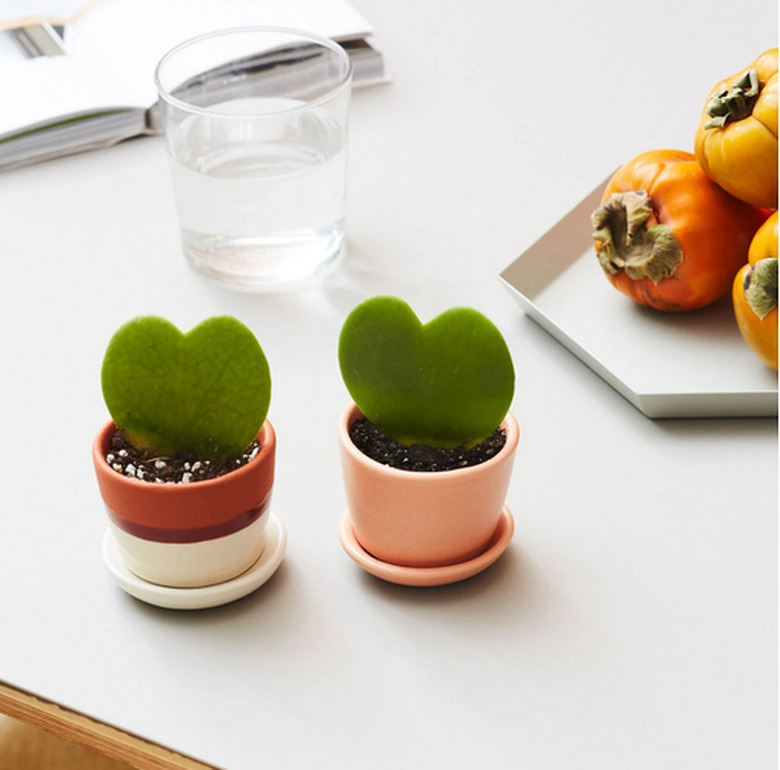Best Houseplant To Buy In February
When you're looking for a houseplant in February, you have to give a nod to St. Valentine's Day. But let's face it, red roses aren't for everybody, so finding a balance is important.
Enter the perfect plant for February: the sweetheart hoya (Hoya kerrii). It's an easy-care, semi-succulent with puffy leaves that look like they're cut with heart-shaped cookie cutters.
Meet the Sweetheart Hoya
Succulents have a reputation as tough, take-no-prisoner plants that can largely care for themselves. And sweetheart hoya is easy-care and independent. But it's got a soft side too, with its huge, heart-shaped leaves as large as your palm. They come in fresh green, variegated cream and green, or green with an ivory "racing stripe" down the center.
Over time, sweetheart hoya hearts develop into vines up to 13 feet long, full of Valentine leaves. The blossoms are equally incredible; they're small, creamy white and star-shaped clusters with rose-purple centers that look like they belong on a wedding cake.
Buying a Hoya
Hoya kerriis hail from Southeast Asia, but you can usually find them in commerce, especially as Valentine's Day approaches. The plant is usually one heart-shaped leaf in a small container, but it will grow from there just fine.
You can look for one at your local specialty plant store if you live in an urban area, otherwise, shop online. You'll find that Amazon offers quite a variety of Hoya kerrii, from one leaf in a small pot, to bigger plants with many leaves. The Sill sends its Hoya plant in a variety of small, colored containers. Another place to check out online: The 4-inch sweetheart hoya at Pistils Nursery. The sweetheart hoya, and a wide selection of other hoyas, are offered for sale by Taylor Greenhouses.
Caring for a Hoya Kerrii
The sweetheart kerrii doesn't need much to thrive indoors. Give it a site with some bright, indirect sunshine, and extremely well-draining soil (like orchid soil) to keep it happy. Water only occasionally, when the soil has dried out. Never let the plant sit in standing water or get saturated.
When the initial leaf has grown into a vine, start feeding it with balanced water-soluble fertilizer. Use it at half strength twice or three times a year.
